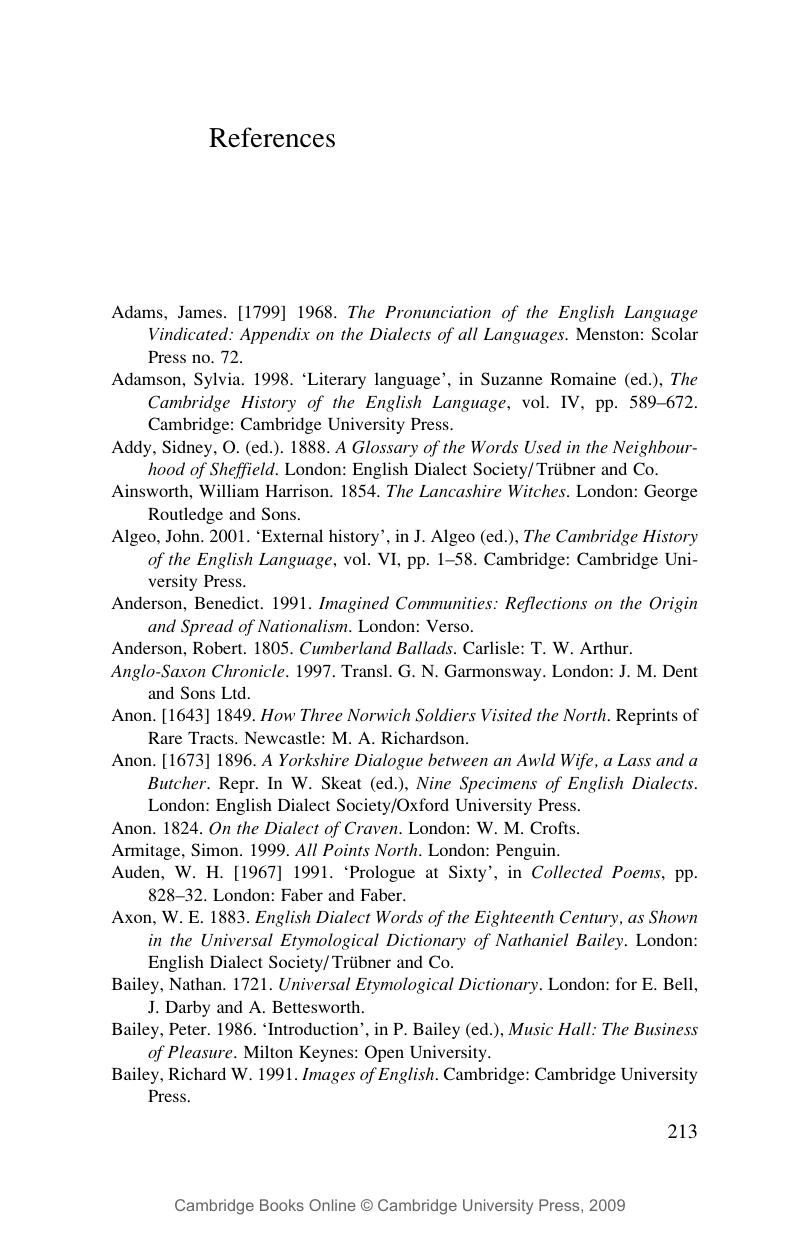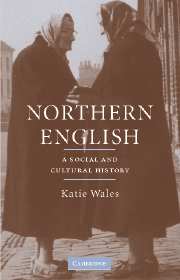Book contents
- Frontmatter
- Contents
- List of illustrations
- Preface
- List of abbreviations and symbols
- 1 ‘The North–South divide’
- 2 The origins of Northern English
- 3 Northern English and the rise of ‘Standard English’
- 4 Northern English after the Industrial Revolution (1750–1950)
- 5 Northern English present and future
- References
- Index of Northern English features
- General index
- References
References
Published online by Cambridge University Press: 22 September 2009
- Frontmatter
- Contents
- List of illustrations
- Preface
- List of abbreviations and symbols
- 1 ‘The North–South divide’
- 2 The origins of Northern English
- 3 Northern English and the rise of ‘Standard English’
- 4 Northern English after the Industrial Revolution (1750–1950)
- 5 Northern English present and future
- References
- Index of Northern English features
- General index
- References
Summary

- Type
- Chapter
- Information
- Northern EnglishA Social and Cultural History, pp. 213 - 240Publisher: Cambridge University PressPrint publication year: 2006



